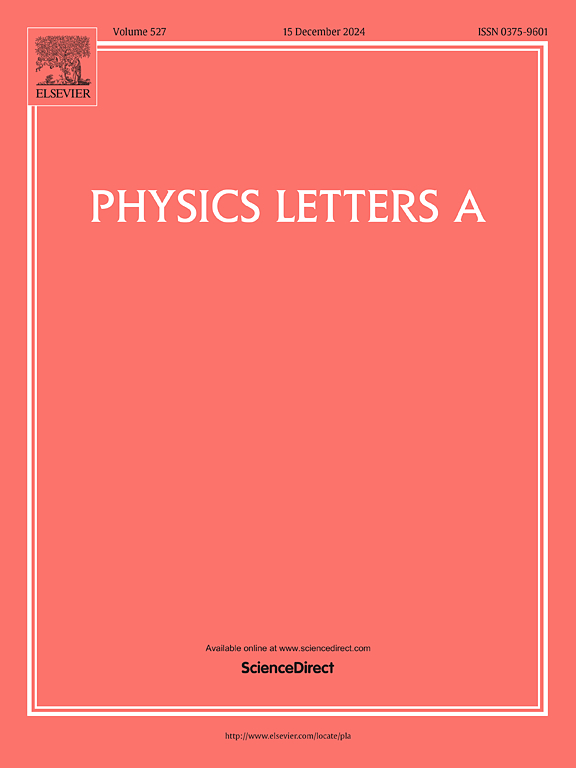IF 2.3
3区 物理与天体物理
Q2 PHYSICS, MULTIDISCIPLINARY
引用次数: 0
摘要
我们探索了自旋轨道耦合(SOC)一维双组分量子液滴的基态和淬火动力学,其特点是组分内相互作用不平衡。根据自旋或轨道耦合(SOC)波数和相互作用之间的相互作用,发现了大量混溶基态条纹和标准平顶或高斯液滴。这些状态之间的变形伴随着可控的自旋群转移。在考虑陷阱时,我们确定了从束缚态到受困气体多体态的转变,这种转变通过化学势的符号变化来捕捉,在更紧密的陷阱(更强的相互作用)中,这种转变发生在原子数较低(较大)的情况下。液滴的呼吸频率会随着成分内相互作用比的增大而增大,或者在 SOC 波数处达到最大值,此时存在从非调制平顶液滴到条纹液滴的转变。拉比耦合的突然变化会导致动态液滴破碎,而 SOC 波数的大振幅淬火会触发自旋去混合的反向传播未俘获液滴或俘获的失相振荡液滴。我们的研究结果为液滴中的受控自旋混合过程和磁束缚态的潜在激发提供了见解,为这一领域的进一步研究开辟了途径。本文章由计算机程序翻译,如有差异,请以英文原文为准。
Interaction imbalanced spin-orbit coupled quantum droplets
We explore the ground states and quench dynamics of spin-orbit coupled (SOC) one-dimensional two-component quantum droplets featuring intracomponent interaction imbalance. A plethora of miscible ground state stripe and standard flat-top or Gaussian droplets is found depending on the interplay between the SOC wavenumber and interactions. Deformations among these states are accompanied by controllable spin population transfer. Upon considering a trap we identify a transition from a bound to a trapped gas many-body state, captured through a sign change of the chemical potential, which occurs at lower (larger) atom numbers for tighter traps (stronger interactions). The droplets breathing frequency is found to increase for larger intracomponent interaction ratio or reaches a maximum at SOC wavenumbers where the transition from non-modulated flat-top to stripe droplets exists. Dynamical droplet fragmentation occurs for abrupt changes of the Rabi-coupling, while large amplitude quenches of the SOC wavenumber trigger spin-demixed counterpropagating untrapped droplets or in-trap out-of-phase oscillating ones. Our results offer insights into controlled spin-mixing processes in droplets and the potential excitation of magnetic bound states, opening avenues for further research in this field.
求助全文
通过发布文献求助,成功后即可免费获取论文全文。
去求助
来源期刊

Physics Letters A
物理-物理:综合
CiteScore
5.10
自引率
3.80%
发文量
493
审稿时长
30 days
期刊介绍:
Physics Letters A offers an exciting publication outlet for novel and frontier physics. It encourages the submission of new research on: condensed matter physics, theoretical physics, nonlinear science, statistical physics, mathematical and computational physics, general and cross-disciplinary physics (including foundations), atomic, molecular and cluster physics, plasma and fluid physics, optical physics, biological physics and nanoscience. No articles on High Energy and Nuclear Physics are published in Physics Letters A. The journal''s high standard and wide dissemination ensures a broad readership amongst the physics community. Rapid publication times and flexible length restrictions give Physics Letters A the edge over other journals in the field.
 求助内容:
求助内容: 应助结果提醒方式:
应助结果提醒方式:


